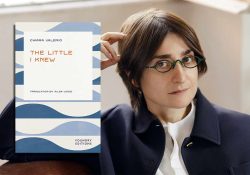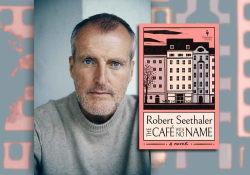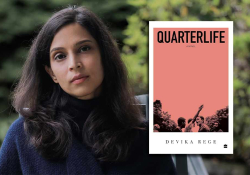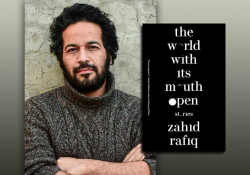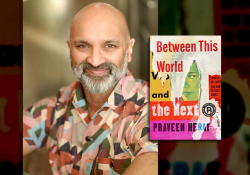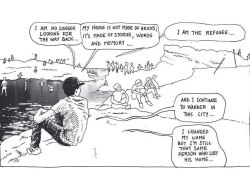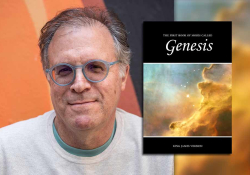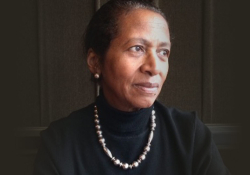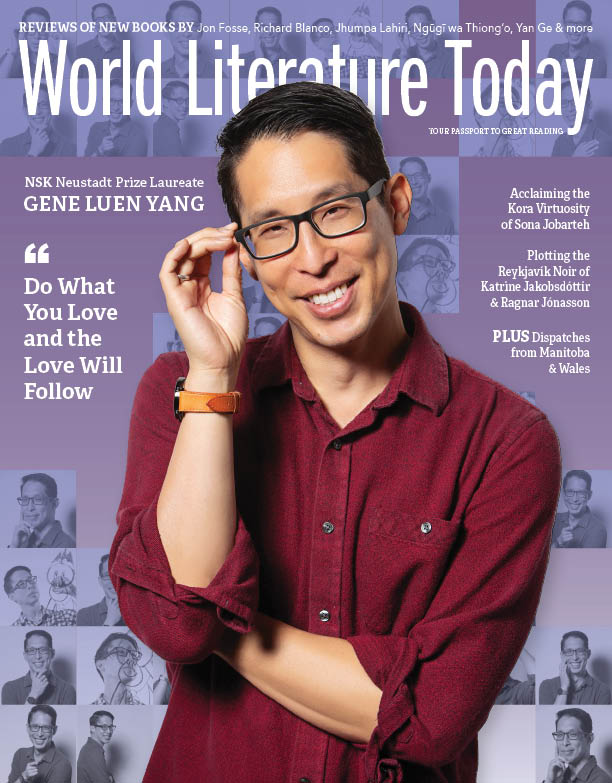6 Questions for Silvia Moreno-Garcia

In October 2023 Restless Books published a new, illustrated edition of Bram Stoker’s gothic masterpiece, Dracula, with a foreword by Alexander Chee and an introduction by Silvia Moreno-Garcia. Moreno-Garcia is the author of Certain Dark Things, a vampire tale set in Mexico City; Mexican Gothic; and The Daughter of Doctor Moreau, among other novels.
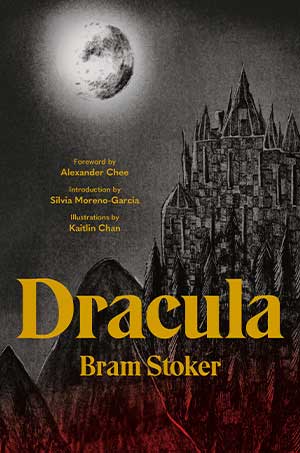 Q
Q
In your introduction to the new edition of Dracula, you write about the influence of disease on portrayals of vampires—the vampire as virus—contrasting them with more palatable versions like Buffy and Twilight. How do you think the Covid-19 pandemic could alter portrayals?
A
It’s nearly impossible to predict the future. Right now vampires are not hot in literature or pop culture, and the pandemic didn’t move the needle on that. This doesn’t mean there are zero books being published with vampires, but there hasn’t been a big, earth-shattering cultural moment like we had with Twilight, which really opened the tap on a certain kind of vampire. And although the TV adaptation of Interview with the Vampire seems to be doing okay, films such as Renfield or The Last Voyage of the Demeter haven’t found an audience. But vampires are an eternally evolving narrative concept.
One thing I haven’t seen, which would be interesting, would be to see vampires clash with modern technology. In 1949 Fritz Leiber wrote “The Girl with the Hungry Eyes,” which is about a psychic vampire, a model who seems to cause the death of the men who look at her image. I always found it an interesting interpretation because the power of the girl derives from mass media. It is her image, reproduced in billboards or calendars, that allows for the vampirism to happen. I wonder if you could do a similar concept but utilize social media as the tool by which a vampire could consume its victims.
And social media goes “viral,” you know. There is this element of contagion inherent in our modern technology.
Q
Writing about your novel Certain Dark Things, Lavie Tidhar said, “Not since Anne Rice’s seminal Interview with the Vampire has the vampire story been so radically reimagined.” How are you and others reimagining the vampire story?
A
It’s impossible to give you a single answer because there is not a single vampire story, and vampires are always shifting. For a long time we had the traditional Dracula figure in literature, the vampire who springs from the gothic imagination. This includes characters such as Barnabas Collins from the soap opera Dark Shadows, Anne Rice’s vampires, and Chelsea Quinn Yarbro’s Saint-Germain series.
But then in the 1980s we got movies such as Near Dark and The Lost Boys, or books such as The Hunger or Lost Souls, where the traditional castle and gothic trappings vanished and the vampires were enmeshed in contemporary spaces. Vampires could play rock music or be yuppies at a fashionable nightclub. Then in the ’90s we had the rise of urban fantasy, and the vampire occupies a different space at that point. For example, with novels such as Anita Blake: Vampire Hunter and TV shows like Angel, the vampire was often coexisting with other supernatural entities (werewolves, ghosts, demons, etc.).
Further changes occurred with the popularity of young adult and romantic themes in the 2000s. Recently we have seen queer vampires making more of a splash; the TV adaptation of Interview with the Vampire makes explicit what was once implicit in this regard. The vampire therefore keeps shifting, from a figure of repulsion to one that seems to fulfill fantasies and beyond.
Q
While reimagining the vampire story, how are these contemporary novels also Dracula’s literary offspring (or not)?
A
Many vampire stories owe a huge debt to Dracula, sometimes without even realizing it. There is a certain “canon” that gets formalized and that few people think to take apart. For example, we don’t see many vampires that become vampires because they’ve been cursed due to their terrible behavior in life, which would have been a common origin for the vampire in traditional folklore. Vampires being able to “turn” people into vampires, like a supernatural pyramid scheme or franchise operation, is something that occurs in Dracula. Before that story you got bitten and you died.
The vampire as a feudal overlord who is rich and powerful, like the famous count, also recurs again and again. We don’t see that many poor vampires in fiction, though there are some notable exceptions such as Let the Right One In, where the vampire does not control a large amount of capital or power. Though, in the case of Let the Right One In, that may be because the vampire is a child who needs a protector.
Q
Though vampire tales began in Europe, there appears to be a strong offering from Mexico. In addition to Certain Dark Things, what novels from Mexico would you recommend?
A
There is no strong tradition of vampires in Mexican literature. I can only think of a few Mexican novels about vampires. The first one is Vlad, by Carlos Fuentes, which reimagines Dracula moving to Mexico City. The other is The Route of Ice and Salt, which is inspired by the voyage of the Demeter in Dracula. So, as I said before, the shadow of the Count still looms large across time and space.
We have more vampire examples in film than in literature, although even then I wouldn’t say they are numerous in comparison to the production of American and British studios. But we do have Germán Robles, who played a vampire in a couple of Mexican movies. The style of those films was gothic, and the vampire is the old-fashioned Bela Lugosi type.
Then we have Alucarda, which is a mixture of several things, but does have vampires and is considered a loose adaptation of Carmilla. It was shot in English in Mexico with a Mexican crew. The same director of Alucarda, Juan López Moctezuma, also directed another vampire film called Mary, Mary, Bloody Mary. It also had an English-speaking cast, but this time the vampire in question was operating in a fairly nongothic, nontraditional space.
Probably the most interesting Mexican vampire film is Cronos. For one, because it was the launching pad of Guillermo del Toro, but for another because it took place at a time when Mexican movie productions were few and far between due to changes in the industry, and horror films were especially scarce.
Q
What are your favorite movies featuring vampires?
A
One very obscure movie I found intriguing was The Wisdom of Crocodiles. The vampire in that one behaves like I’d expect a more realistic vampire to behave, like a serial killer. I enjoyed Cronos very much when I saw it in movie theaters. Carl Theodor Dreyer’s Vampyr is a lovely vampire film. It was released only a year after Dracula, which was directed by Tod Browning, with Lugosi in the lead role. Dracula and Vampyr are like night and day. Dreyer’s film feels like a dream or a nightmare; it’s like David Lynch made a vampire movie.
Q
Though you were born in Mexico, you now live in Vancouver, British Columbia. Is it the setting of much horror lit?
A
My friend and I were talking about that recently. Vancouver never appears anywhere on film as itself. It’s always masquerading as Seattle or New York or any other city. And it’s not a terribly popular locale for science fiction and fantasy. Which is fine, because in case of a zombie apocalypse I guess we’ll do fine. I’ll be working on a novella that is set in Vancouver soon, and you wouldn’t think it’s such an exotic locale, but I challenge anyone to name five horror novels set in this city. Then see how many you can name set in New York.
Silvia Moreno-Garcia is the author of Silver Nitrate, The Daughter of Doctor Moreau, Mexican Gothic, and many other books. She has won the Locus, British Fantasy, and World Fantasy awards.

